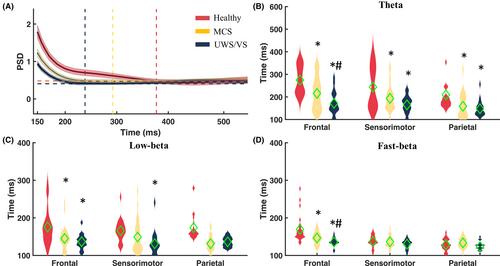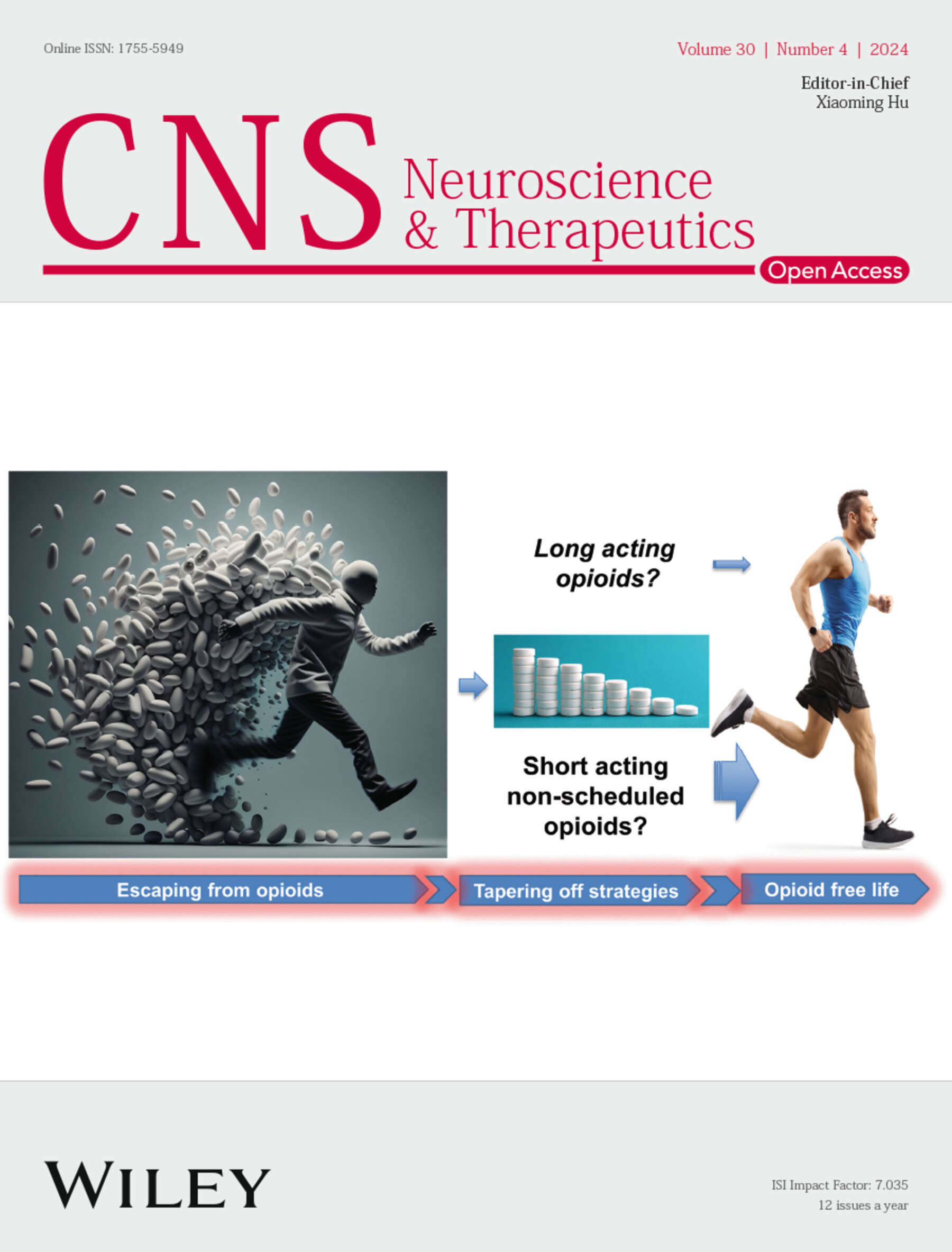Breakdown of oscillatory effective networks in disorders of consciousness
Abstract
Introduction
Combining transcranial magnetic stimulation with electroencephalography (TMS-EEG), oscillatory reactivity can be measured, allowing us to investigate the interaction between local and distant cortical oscillations. However, the extent to which human consciousness is related to these oscillatory effective networks has yet to be explored.
Aims
We tend to investigate the link between oscillatory effective networks and brain consciousness, by monitoring the global transmission of TMS-induced oscillations in disorders of consciousness (DOC).
Results
A cohort of DOC patients was included in this study, which included 28 patients with a minimally conscious state (MCS) and 20 patients with vegetative state/unresponsive wakefulness syndrome (VS/UWS). Additionally, 25 healthy controls were enrolled. The oscillatory reactivity to single-pulse TMS of the frontal, sensorimotor and parietal cortex was measured using event-related spectral perturbation of TMS-EEG. The temporal–spatial properties of the oscillatory reactivity were illustrated through life time, decay gradients and accumulative power. In DOC patients, an oscillatory reactivity was observed to be temporally and spatially suppressed. TMS-EEG of DOC patients showed that the oscillations did not travel as far in healthy controls, in terms of both temporal and spatial dimensions. Moreover, cortical theta reactivity was found to be a reliable indicator in distinguishing DOC versus healthy controls when TMS of the parietal region and in distinguishing MCS versus VS/UWS when TMS of the frontal region. Additionally, a positive correlation was observed between the Coma Recovery Scale-Revised scores of the DOC patients and the cortical theta reactivity.
Conclusions
The findings revealed a breakdown of oscillatory effective networks in DOC patients, which has implications for the use of TMS-EEG in DOC evaluation and offers a neural oscillation viewpoint on the neurological basis of human consciousness.


 求助内容:
求助内容: 应助结果提醒方式:
应助结果提醒方式:


